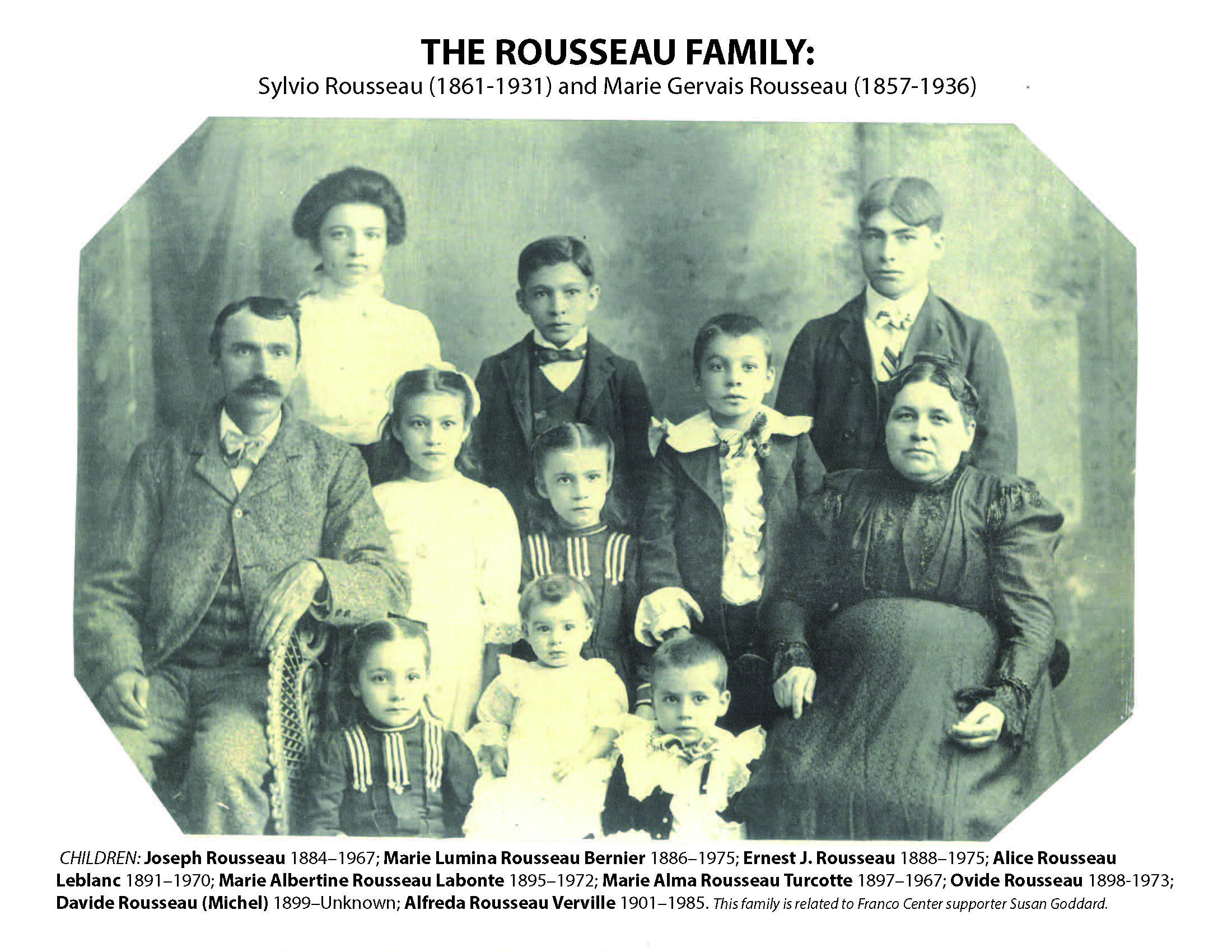Sylvio and Marie Gervais Rousseau –
Migration to Lewiston, Maine
Sylvio Rousseau and Marie Gervais Rousseau were part of the significant wave of French-Canadian migration to the United States in the late-19th and early-20th centuries. Many French Canadians, particularly those from Quebec, moved to New England in search of better economic opportunities, primarily in the textile and manufacturing industries.
Lewiston, Maine, was one of the key destinations for French-Canadian immigrants during this period. The city had a thriving textile industry, and many French-Canadian families, especially farmers like Sylvio, moved there to work in the mills. The French-speaking community in Lewiston grew rapidly during this time, and many immigrants maintained strong ties to their Quebecois heritage.
Sylvio Rousseau’s Life as a Farmer
Given that Sylvio was a farmer before moving to Lewiston, his life in Quebec was typical of many French-Canadian families during that time. Many farmers in Quebec during the 19th century worked on small family farms, often focusing on agriculture like livestock, grains, and dairy. After migrating, he would have had to adapt to a different lifestyle in Lewiston, though many immigrants retained connections to their agricultural roots. Some French-Canadian immigrants in New England continued farming, but many transitioned to work in factories.
French-Canadian Migration to Lewiston
Why Lewiston? The city of Lewiston was home to a large French-Canadian community, particularly during the industrial boom in the late-19th century. The textile mills and other industries in Lewiston attracted many French-Canadian immigrants from Quebec, who were drawn by the promise of steady work and higher wages.
Community in Lewiston:
French-Canadian immigrants often settled together in tight-knit communities, forming cultural enclaves that helped preserve their language, customs, and Catholic faith. Over time, these communities created institutions like French-speaking churches, schools, and social clubs to support each other.
Life After Moving
Cultural Retention: Like many other French-Canadian immigrants, Sylvio and Marie continued to speak French at home and participated in the local Catholic church and community events. French-Canadian immigrants tried to preserve their cultural identity, even as they adapted to life in the U.S.
Economic Transition: Sylvio might have continued working in agriculture, but as industrialization took hold in Lewiston, many French-Canadian immigrants, especially those who had been farmers, transitioned to working in the factories. Some may have worked in textile mills, shoe factories, or other local industries.
Family Legacy in Lewiston
Over time, French-Canadian immigrants integrated into American society, though many maintained their unique cultural identity. Their children might have worked in the same mills or pursued other professions, but their family history likely remained strongly rooted in the Quebecois tradition.
Children of Sylvio Rousseau and Marie Gervais Rousseau
Joseph Rousseau (1884–1967): Joseph grew up during a time of significant change for French-Canadian immigrants, particularly in Lewiston, Maine. If he followed in the footsteps of his father, he may have worked in the textile mills or in a similar industrial setting, as many French-Canadian men did at the time. His life likely intersected with the broader trends of French-Canadian assimilation into American life while still holding onto his Quebecois roots.
Marie Lumina Rousseau Bernier (1886–1975): As the eldest daughter had a key role in supporting her family’s transition into life in Lewiston. She may have married a French-Canadian man, potentially someone from the same community, as was common in immigrant communities. Her children continued to be part of the French-Canadian enclave in Maine.
Ernest J. Rousseau (1888–1975): Ernest likely followed a similar path to his brothers, working in the mills or other local industries. By the time he was an adult, the French-Canadian community in Lewiston would have been well-established, with many families living in close proximity to one another and participating in the same social and religious activities.
Alice Rousseau Leblanc (1891–1970): As another daughter, Alice experienced the close-knit, immigrant community in Lewiston. Many women of her generation were also involved in the family household or worked in local industries. She married and raised her family in Lewiston, contributing to the French-Canadian presence there.
Marie Albertine Rousseau Labonte (1895–1972): Marie Albertine, like many of her siblings, was part of the generation that witnessed significant social and economic change. She married and had children, and remained part of the strong Franco-American community in Lewiston. This community helped preserve French-Canadian cultural traditions in Maine for generations.
Marie Alma Rousseau Turcotte (1897–1967): Alma’s experience was similar to her siblings. Growing up in Lewiston, she saw the growing French-Canadian population and the changes taking place in the region. Like other members of the family, she may have worked in the local mills or taken on a more traditional role in the home.
Ovide Rousseau (1898–1973): Ovide was born in the late 19th century and was part of the younger generation of immigrants and their children. As Lewiston grew in importance, he would taken advantage of the economic opportunities available to him in the industrial sector. His children further integrated into the American way of life while still holding onto their French-Canadian heritage.
Davide Rousseau (Michel) (1899–Unknown): It’s interesting that Davide’s full name was Michel, which could indicate a family naming tradition or a possible variation in records. It’s not uncommon for names to be changed or altered when individuals or families migrated. Davide likely experienced similar life challenges and opportunities as his siblings, such as the transition from farm life to industrial work. Returned to Canada.
Alfreda Rousseau Verville (1901–1985): Alfreda was part of the later generation of children born to Sylvio and Marie, growing up in an established French-Canadian community in Lewiston. She married a French-Canadian man and likely remained within the same cultural and religious networks, contributing to the preservation of French-Canadian traditions in Lewiston.







